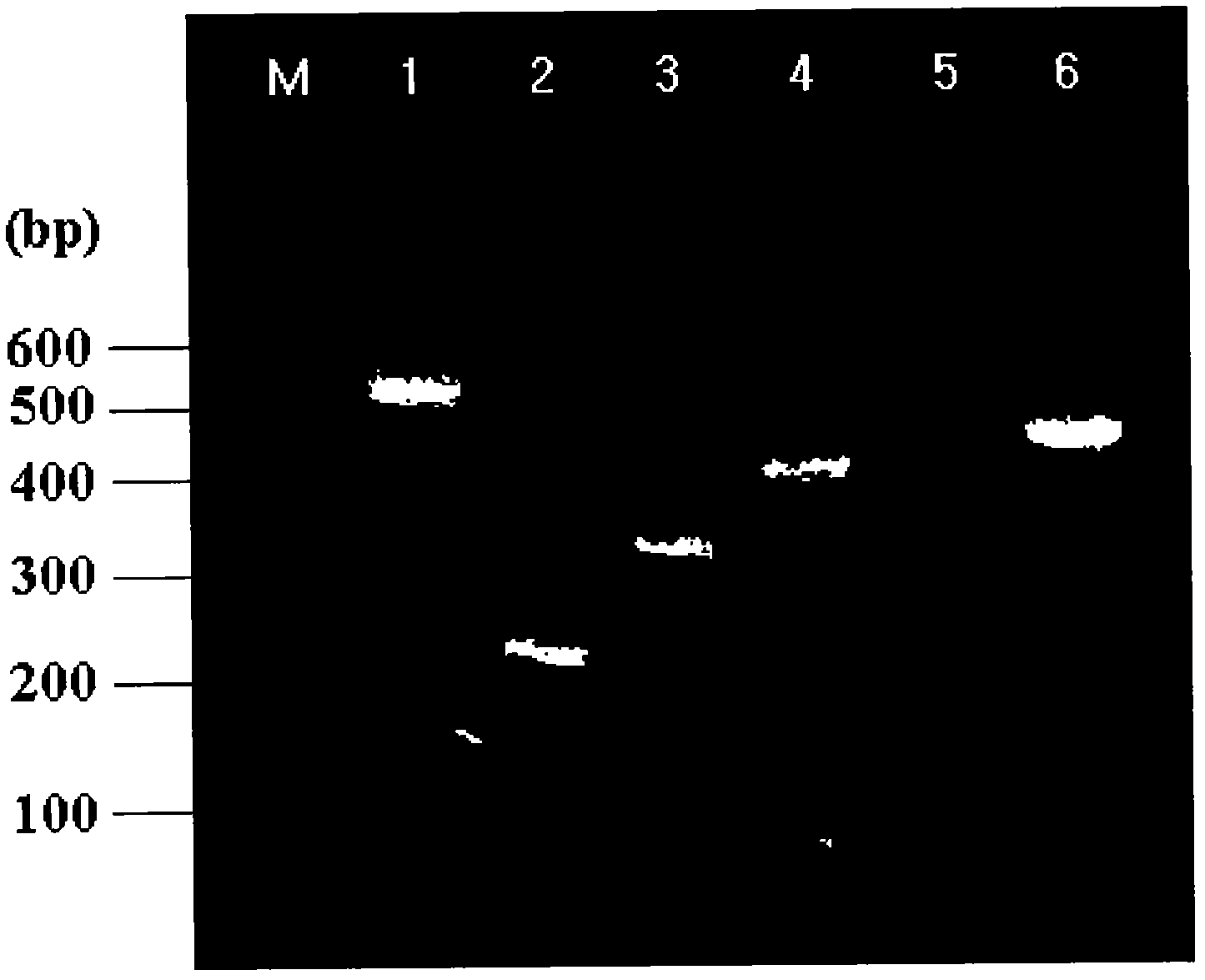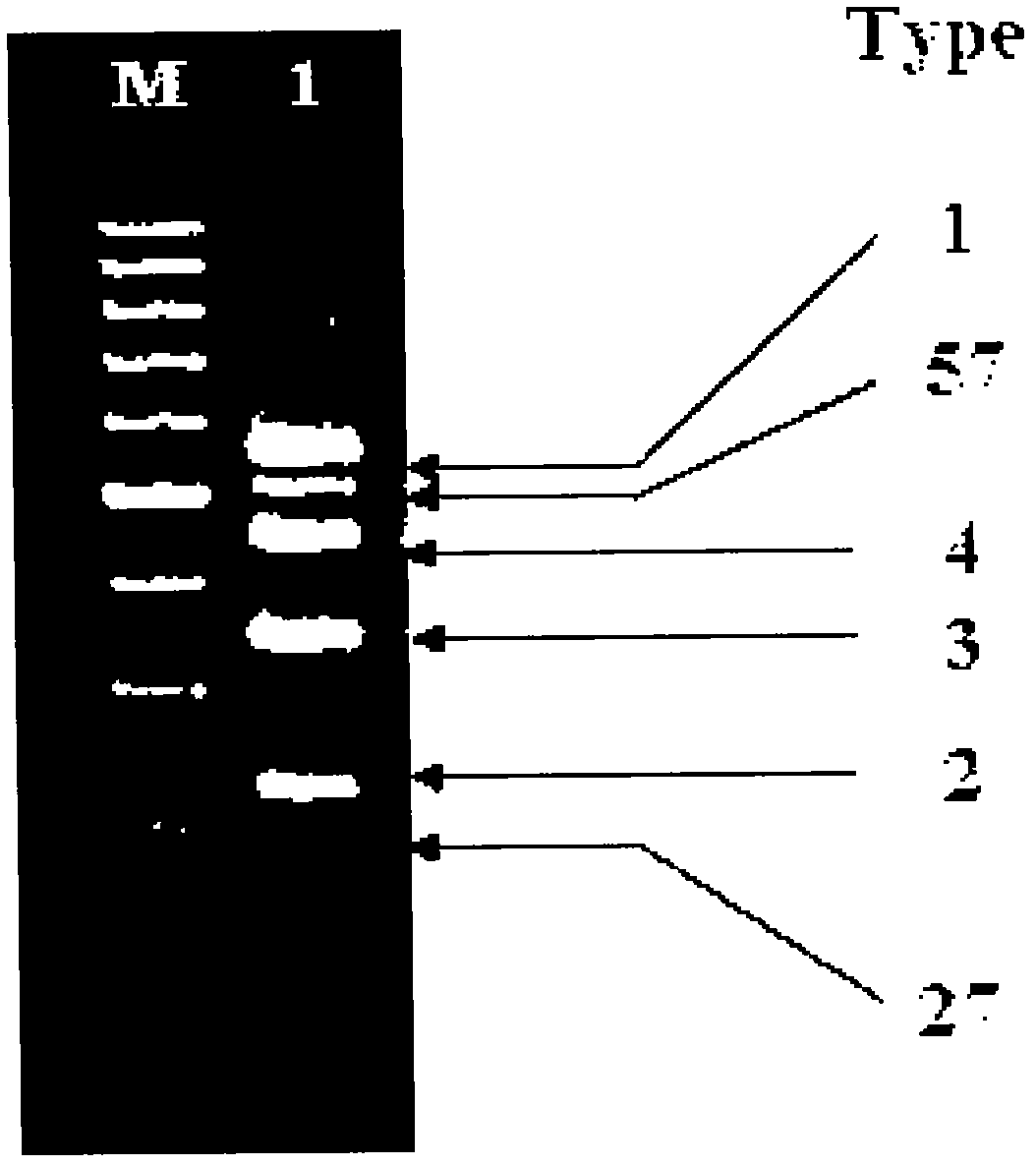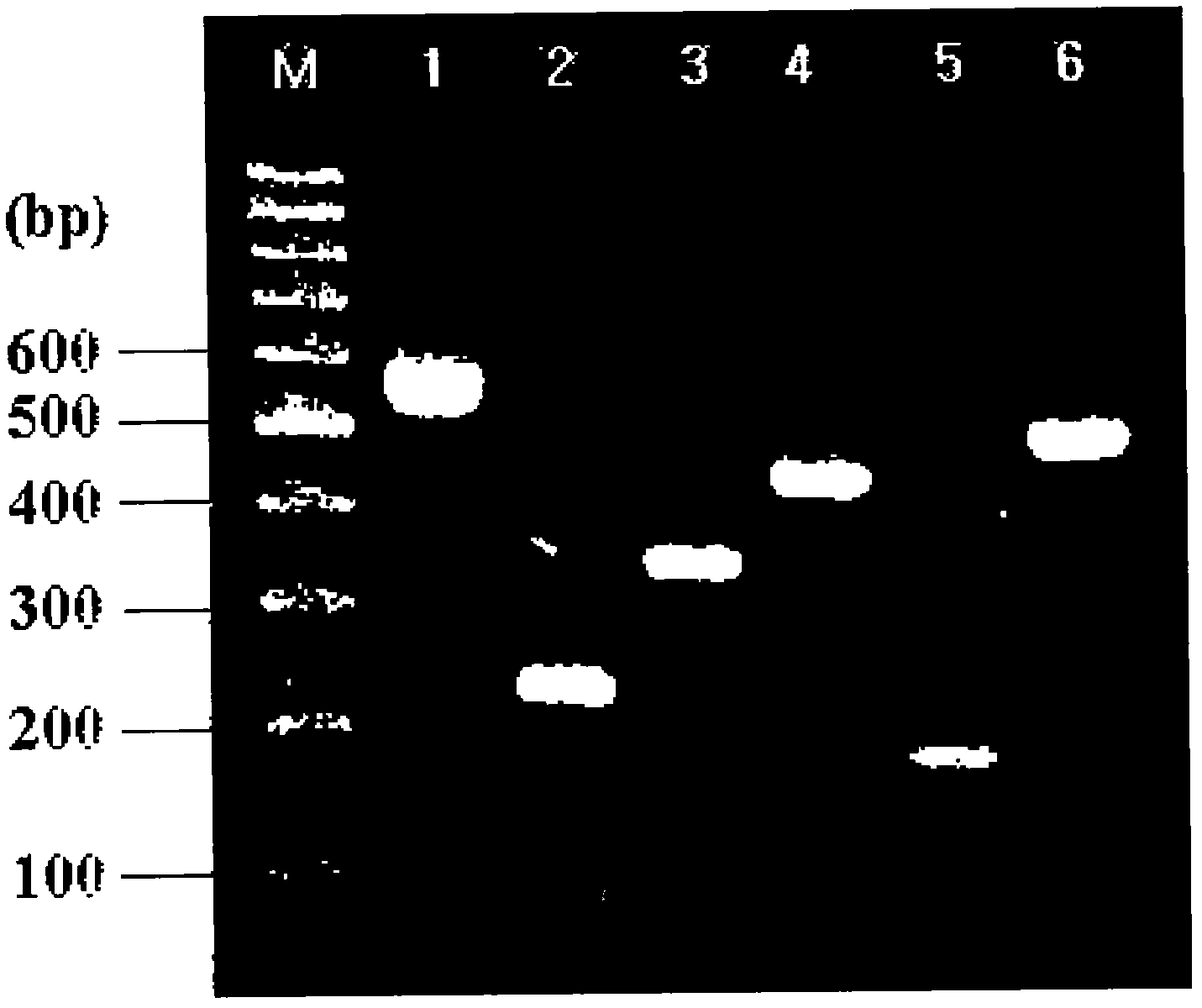Primer and probe for detection of human papillomavirus, and detection method of human papillomavirus using same
A technology for virus detection and papilloma, applied in biochemical equipment and methods, microbiological measurement/testing, DNA/RNA fragments, etc., can solve problems such as difficulty in accurate confirmation, reduced sensitivity, and clinical use restrictions, and achieve effective diagnosis , the effect of reducing time and cost
- Summary
- Abstract
- Description
- Claims
- Application Information
AI Technical Summary
Problems solved by technology
Method used
Image
Examples
Embodiment 1
[0086] Design and synthesis of primers for amplification of 6 subtype-specific DNA base sequences
[0087] The inventors of the present invention designed and synthesized PCR primers for detection as specific base sequences for each type of HPV gene (intergenic sequence) as shown in Table 1, which can prevent HPV- 1. The mutual cross-reaction of HPV-2, HPV-3, HPV-4, HPV-27 and HPV-57 can be detected at one time.
[0088] 【Table 1】
[0089]
Embodiment 2
[0091] Preparation of kits for detection of human papillomavirus
[0092] The inventors of the present invention prepared a multiplex polymerase chain reaction mixture comprising 6 pairs of PCR primers (sequence number (1-12)) synthesized in Example 1, and prepared a detection kit. Among them, the detection The kit consists of 10X reaction buffer, multiple primer mixture (sequence number 1-12) and Taq DNA polymerase (5U / μl).
Embodiment 3
[0094] Multiplex PCR using primer pairs for each of the 6 subtypes
[0095] The inventors of the present invention performed a multiplex polymerase chain reaction using standard HPV DNAs of six subtypes and amplification primer pairs for each subtype.
[0096] First, wart skin tissue is collected, treated with proteinase K, and DNA is extracted from the tissue, which is then used as template DNA to perform multiple polymerase chain reaction using PCR primer mixture. If the multiplex polymerase chain reaction is over, the amplified DNA is electrophoresed on a 1.5% agarose gel, and the subtype is confirmed and determined according to the presence or absence of specific DNA base sequence amplification and its size. The results are as follows figure 1 shown.
[0097]From the results, it can be confirmed that the first primer pair consisting of the nucleotide sequences of SEQ ID NO: 1 and 2 amplifies HPV-1 DNA, and the second primer pair consisting of the nucleotide sequences of...
PUM
 Login to View More
Login to View More Abstract
Description
Claims
Application Information
 Login to View More
Login to View More - R&D
- Intellectual Property
- Life Sciences
- Materials
- Tech Scout
- Unparalleled Data Quality
- Higher Quality Content
- 60% Fewer Hallucinations
Browse by: Latest US Patents, China's latest patents, Technical Efficacy Thesaurus, Application Domain, Technology Topic, Popular Technical Reports.
© 2025 PatSnap. All rights reserved.Legal|Privacy policy|Modern Slavery Act Transparency Statement|Sitemap|About US| Contact US: help@patsnap.com



